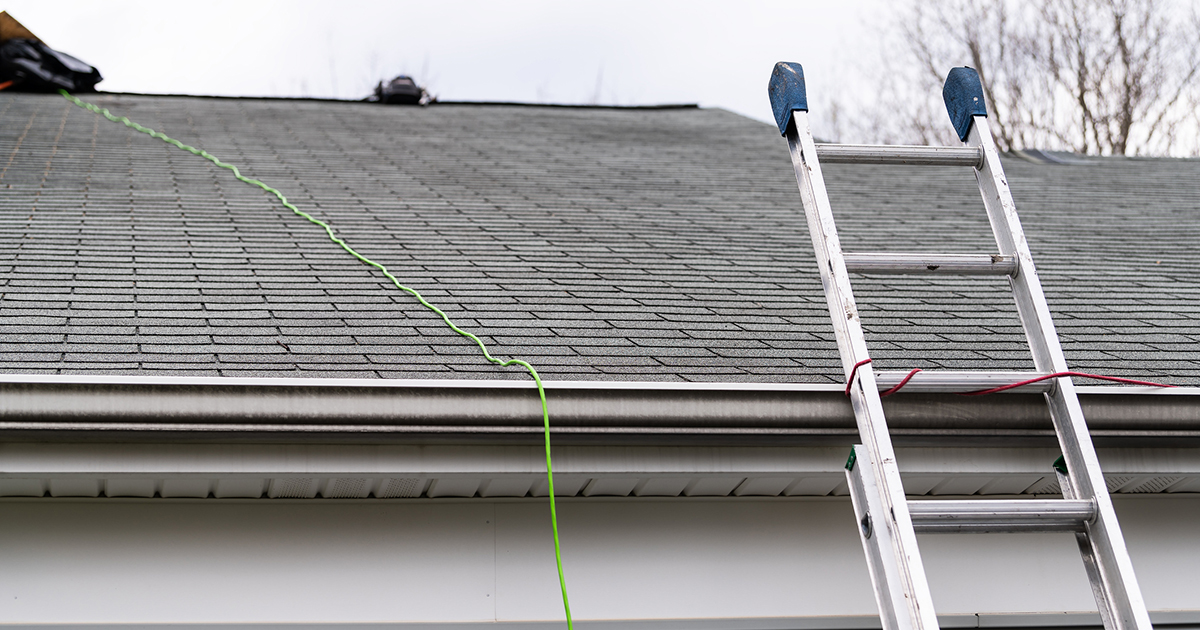It’s that time of year again…that time when the air is cooler, you’re spending more time indoors and noticing lots of little things…small home repairs…that you put on the backburner when you were busy soaking up the summer sun.
But as you start to make a list of all your DIY projects, it can be tough to prioritize…and even tougher to predict which ones need to be addressed first to ensure everyone in your house stays safe (and warm and dry).
Check out our list of projects you may not have on your radar, but you may want to add them to the top of your list!
10 Home Repairs to Make in the Next Six Months
- Fill cracks in your driveway before winter. If summer got busy and you now have a driveway with a few extra cracks (and weeds!), now’s the time to fix them. Depending on how wide and deep your driveway cracks are, you may need to fill the cracks in with a little sand before using a cold patch (many options work in any temperature) and re-seal your driveway (which needs to be done when it’s 60°F or warmer). Just be sure to pull the weeds and clean out the cracks as best as you can beforehand. Waiting until spring can cause driveway cracks to get wider, thanks to water freezing and expanding the cracks during winter.
- Purchase a backup sump pump. Raise your hand if you like flooded basements! No one? Then this tip is for you. Heavy rainfalls are common in fall and spring, especially right as the ground begins to thaw, which can mean your sump pump is working overtime. While sump pumps are easy to forget about when they are working well, they often become a hot topic (and reason for being late/missing work) following a big storm. Prepare by having a back-up pump on hand for when yours stops working. This is especially important since sump pumps often go out after they’ve been running constantly, meaning there is high demand for them in stores and not enough to go around. (P.S. Be sure to maintain your sump pump, too!)
- Clean your washer and dryer. We know, cleaning appliances that clean things is low on your list (kind of like flossing your teeth), but this is something you can add to your monthly chores (we promise it doesn’t take long). Check the owner’s manual for your washer and dryer for specific instructions for your machine. The general rule of thumb is to put your washer on the hottest cycle (or the clean cycle if you have one). You can also add two cups of vinegar and a quarter cup of baking soda to boost your cleaning cycle. Then, be sure to wipe down the inside of the door and the seals. For your dryer, pull it away from the wall and make sure your dryer vent is clean and there are no lint clumps.
- Inspect and repair your roof annually. If heights aren’t your jam, remember this is a once-a-year inspection (and one that you can likely rope a friend or family member into doing). Check your roof for loose shingles and nails and secure them. Watch for soft spots and other damage and repair them as soon as you can to avoid extensive damage. Typical asphalt shingles last anywhere from 15-30 years. You can extend the life of your roof by regularly addressing loose shingles and even cleaning the mold and mildew off.
- Take care of your foundation. Similar to the top of your house, your foundation needs regular inspections and repairs as well. Since it is the very thing that supports the rest of your house, aim for quarterly inspections. While humans need lots of water, foundations do not. Look for ways to limit the amount of water around your foundation through downspout extensions, limiting plants close to your house (especially plants that require a lot of water to thrive) and filling and sealing small cracks. If cracks worsen or are too large to fill, call an expert to take a look.
- Fix any flickering lights. Maybe it’s as easy as replacing the light bulb (which is your first course of action), or maybe it’s a bigger issue, like faulty electrical wiring. Address concerns involving your lighting as soon as you can to avoid bigger issues, such as high electric bills or worse, fires.
- Check your smoke, carbon monoxide and water detectors. While this one may not seem like a repair, it is an important home maintenance step to keep everyone inside safe. Aim to replace your batteries once a year (around Daylight Savings Time when you adjust your clocks) to avoid detectors failing…and annoying chirping in the middle of the night.
- Give your hot water heater a little love. Similar to a sump pump, a hot water heater is one appliance that is easy to install and then forget about…until it stops working and you’re stuck with cold showers. Drain your hot water heater once a year to clear out the sediment build up which can cause clogs.
- Have a caulking scavenger hunt. Find your caulk gun, stock up on a variety of caulks from window and door sealant to tub and tile caulk and look for areas in your house where your caulk is cracking or has chunks missing. It’s especially important to touch-up caulk in areas where water (such as around your toilet or inside your tub) can seep into other areas and cause damage, as well as in areas where air can travel in and out of your house (like around doors and windows) to help keep heat inside.
- Say goodbye to leaks. Whether it’s a leaky toilet or water that’s pooling around your water softener, any water where it shouldn’t be needs to be addressed quickly to avoid even more water. After you’ve taken as many DIY steps as you can, it may be time to call in an expert.
How to afford the costs of home maintenance repairs
If all these home maintenance tasks have your head spinning in terms of how you’ll pay for them, here are a few tips:
- Add a home maintenance line to your budget. Typically, planning for 3% of your home’s value per year is a good rule of thumb. So, if your home’s value is $200,000, plan on spending $6,000 a year. That’s $500 per month to set aside for home repairs. Not able to set aside that much? Start where you can by allotting a smaller portion of your budget for home repairs and work your way up to more when you are able to do so.
- Set up a home repair savings account. Add a Name Your Savings account to the mix to save up for larger home repair expenses, such as replacing a hot water heater or another appliance.
- Consider tapping into your home’s equity. A HELOC, or Home Equity Line of Credit, is a flexible line of credit based on the amount of equity in your home. It’s like a credit card funded by your home’s value.
- Connect with a friendly Verve team member. Not sure which financial approach is best to tackle your home repairs? Connect with a Verve team member (did you know we have certified financial coaches and you can talk with them for free?) to discuss your finances and what option for financing your home maintenance is best.
Looking for more home tips? Visit our blog for more home improvement and finance tips.






 Federally Insured by NCUA |
Federally Insured by NCUA |  Equal Housing Opportunity |
Equal Housing Opportunity |